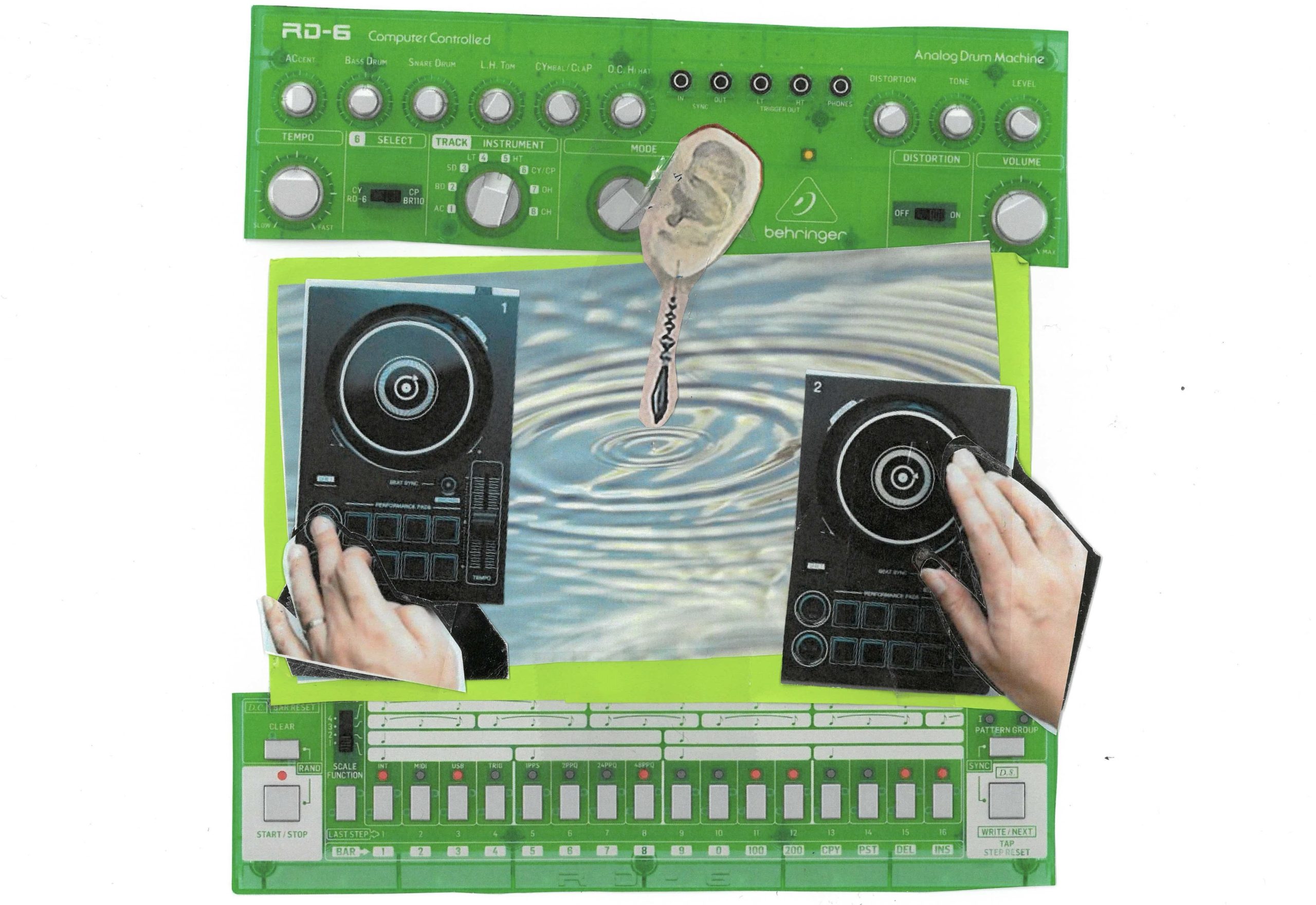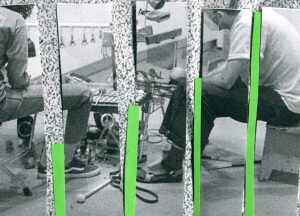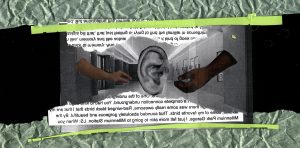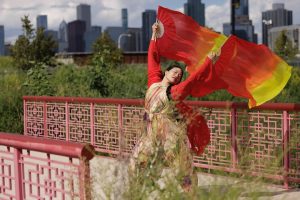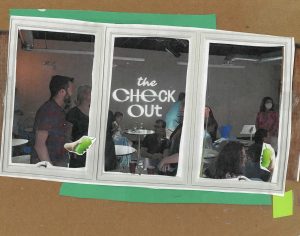Tuning Away from Mechanized Listening features Midwest’s music ecosystems—listening cultures where thoughtful curation, collective engagement, and storytelling still shape what and how we hear. This series is meant to be a reminder: listening can be more than a passive, forgetful experience.
Introducing puddle’s “DJing, for those who care”
“DJing, for those who care” is a four-week workshop led by puddle DJs Julian (aka Pronoia) and Andrés (aka moreit) at Cloud House/PS1 Close House in Iowa City. Designed for beginners and those with some experience, the series introduces participants to the fundamentals of DJing—like track structure, mixing, and library management—before moving into advanced techniques such as effects, vinyl DJing, live sampling, and seamless transitions. The workshop emphasizes hands-on practice and invites participants to approach DJing as a craft rooted in care and attentiveness by way learning technical training and hearing personal perspectives on puddle DJ’s own paths into DJing.
This interview was conducted via Zoom and then transcribed.
Livy Onalee Snyder (LS): The title of your workshop is DJing for Those Who Care. I’m curious—what does that mean to you? How did you come to frame the workshop around the idea of care? The title also implies maybe there are DJs who don’t care, so what does caring mean in that context?
Andrés Mora Mata (AMM): Living in a college town has really shaped that idea for me. I’ve noticed a lot of people go out not so much to engage with the music, but just to drink and hang out with their friends. I wanted to challenge that a little—because yes, you can drink and enjoy music, but there’s more to a night out than just getting drunk. A DJ set can be a transformative experience. That’s something I want to share with people—through the puddle parties we do, through the podcast, and by encouraging others to create those kinds of experiences at their own events.
When I think about caring, it’s about putting passion and time into what you’re doing. For me, DJing is mostly a hobby, but I dedicate a lot of effort to it, and I hope others do the same. Sometimes people call themselves DJs without putting in that work, and it shows in the product they deliver. That makes me a little sad, because DJing isn’t just playing music—it’s about creating something for others. Both approaches are valid, but I see a clear difference between them.
LS: That makes sense. Care can encompass many things from self-care to reading the crowd. And I appreciate your emphasis around intentional listening—really getting the audience to that “aha” moment where they start to ask what song or beat you’re sampling. I know we’ll talk more about how you think of care in relation to listening while DJing, but let’s talk about puddle. It’s a collaboration—how did it start? When did you decide that puddle was the right name and ethos?
AMM: That’s more of a Julian question—he came up with the name and the original vision. Claire and I are helping hands in it but Julian wanted puddle to be more than just a party series. He had an idea of community building, of something imperfect but beautiful, where people come together to dance, listen, and share music. That’s what resonated with me.
LS: How did you personally get involved? Did Julian invite you, or did you approach him?
AMM: Julian and Clare met in Philadelphia, and I met them through Julian’s dad. That was about 3 or 4 years ago… They moved from Philadelphia to Cedar Rapids, and then to Iowa City. When he arrived here, he wanted to make a party series happen. He had also been thinking about a record label called puddle. With help from his dad—who has thrown raves in Iowa for years—and from Claire, we pulled off the first puddle party in October of last year. It felt like the right place and right time, with the right intentions, so it just came together.
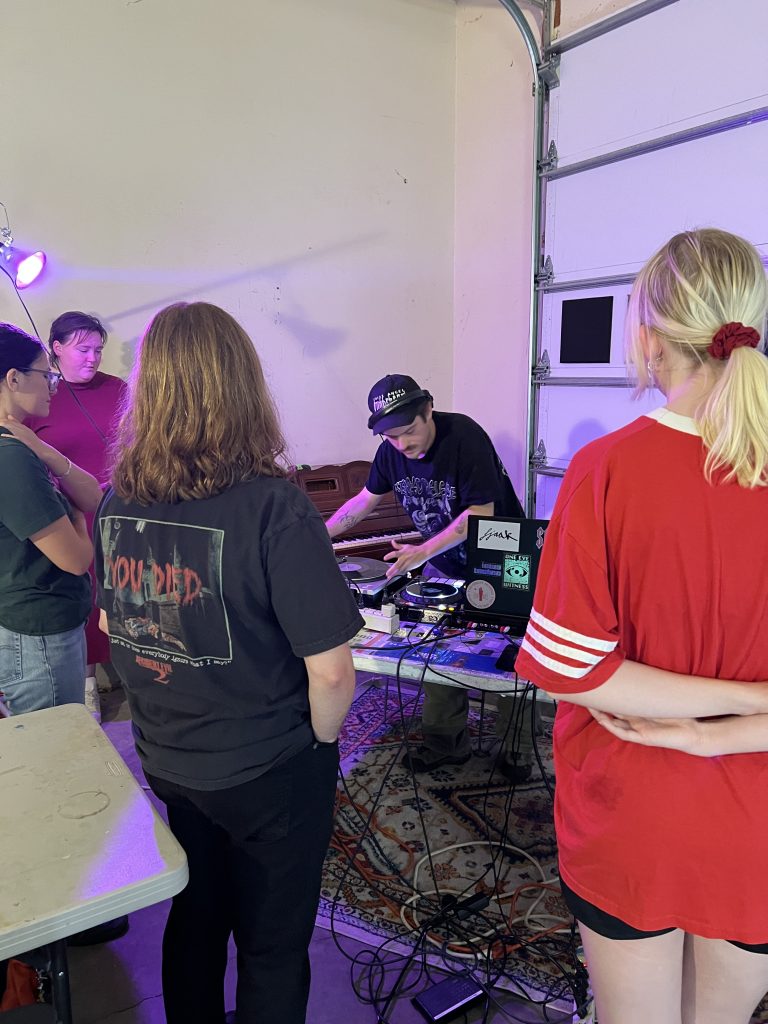
LS: I love it when things just come together. I’m curious, can you describe more about that first party?
AMM: Yes, the first puddle was October last year. We invited some friends from Chicago—warmcore and Fuj—to play. Julian, his dad, and I also played. It went really well; people loved it. From there, we knew we wanted to keep going.
LS: Do you remember what you played at that first show?
AMM: I opened with slower techno and house, then mixed in rhythms connected to my Latino roots—slower tempo-based tracks that still fit under the umbrella of techno with a strong latin influence on them. I also played a couple of my own tracks and one of my all-time favorites, “Groove La Chord” by Aril Brikha. That track just does everything right for me. I even released my own version of it, “Groove La-tino”—re-imagining how it might sound if it had been made in Venezuela rather than Sweden in the late ’90s.
LS: That’s amazing. I can’t wait to listen to it. Since you’re teaching beginner-level skills in the workshop, how do you balance teaching technical aspects like mixing and routing with the more intangible parts of DJing—like feeling inspired to re-imagine a song in the 90s like you did with Groove La-tino?
AMM: The intangible side is really important. A DJ has to be intentional with how they want their music to be heard, and aware of what’s appropriate for the setting. On the technical side, I think I’m good at simplifying concepts that might seem intimidating, such as understanding the clash of the sonic frequencies between tracks or identifying track structure. That’s part of the workshop’s purpose: lowering barriers to entry, so they can be as creative as possible when they DJ. I also encourage people to find music outside the algorithms—to look for sounds that really speak to them and don’t fall under the usual umbrella of the “Made For You” playlists.
LS: That connects to my next question: DJing is largely about curation. How do you approach listening and crate-digging?
AMM: I rely a lot on what my friends are listening to, and I use Bandcamp heavily. If I find something I like, I’ll dig deeper into that label or artist. I also use online tools like Discogs, which lets you search by features, genre, or even location. For example, I love Swedish techno from the late 90s and early 2000s, and Discogs helps me find really specific tracks like that.
LS: What kinds of sounds are you searching for lately?
AMM: I’m drawn to music that’s both intense and sensual—something with a strong bassline, nice chords, maybe a melody, usually around 130–138 BPM; and that calls back to my latino roots whether it be on its rhythms or concept I’ve also been listening to a lot of bass music lately, especially things that echo earlier dubstep and dubtechno styles but feel fresh.
LS: Bandcamp can be such a rabbit hole! I am assuming you have a pretty big collection of records?
AMM: Yes, I have about three hundred records. Whenever I visit a new city, I try to stop at a record store. Recently in Madison, I visited JiggyJamz Records, which is excellent. I bought a few records there, and now I just need to digitize them or learn vinyl properly so I can play them live.
LS: Based on what you’ve mentioned so far, it seems like you know the Midwest well. How would you say the Midwest shaped your approach to sound and community?
AMM: I moved to the US in 2015, starting in Kansas. At that time, I didn’t connect much with a music community. But when I moved to Iowa five years ago, everything changed. People here are so supportive—even if they don’t fully understand the culture behind the music you play, they show up, help set up sound systems, and make parties happen. For example, in 2024 during Mission Creek Festival, we managed to organize a basement show with international artists Pelada on just a few hours’ notice—purely because the community pulled together. That’s the Midwest spirit.
LS: That’s incredible. Okay, final question. What do you hope participants in the workshop discover about themselves, as DJs but especially as listeners? And I’m wondering if anything has surprised you so far about the participants?
AMM: I want them to walk away seeing music as something more expansive than what you get from a streaming app or a bar playlist. With the tools available now, you can take apart tracks, recombine them, and create something new and personal. I want people to view DJing as malleable—something they can shape for themselves, not just a rigid formula.
What’s surprised me is the range of reasons people come to the workshop. Some are just curious, others want to refine their skills as playlist-makers and bring that into social spaces, and some want to reconnect with the sounds they grew up with. Across the board, there’s a genuine desire to experiment and make music presentation more artistic.
LS: Do you think participants will continue DJing after the workshop?
AMM: I hope so. I’ve encouraged them to connect with puddle or other local events, so they’ll have opportunities to play outside their bedrooms. Anywhere can be a party if you bring the right energy.
LS: Agreed! Thank you so much for taking the time to share about your practice and the workshop. I just want to offer space at the end here—Is there anything else you’d like to share or add? The floor is yours!
AMM: Just that if this series goes well, I’d love to see it through to the end and maybe build on it. One idea I’ve been thinking about is a workshop focused on electronic music production. That’s a gap I see, and I think people would really benefit from it.
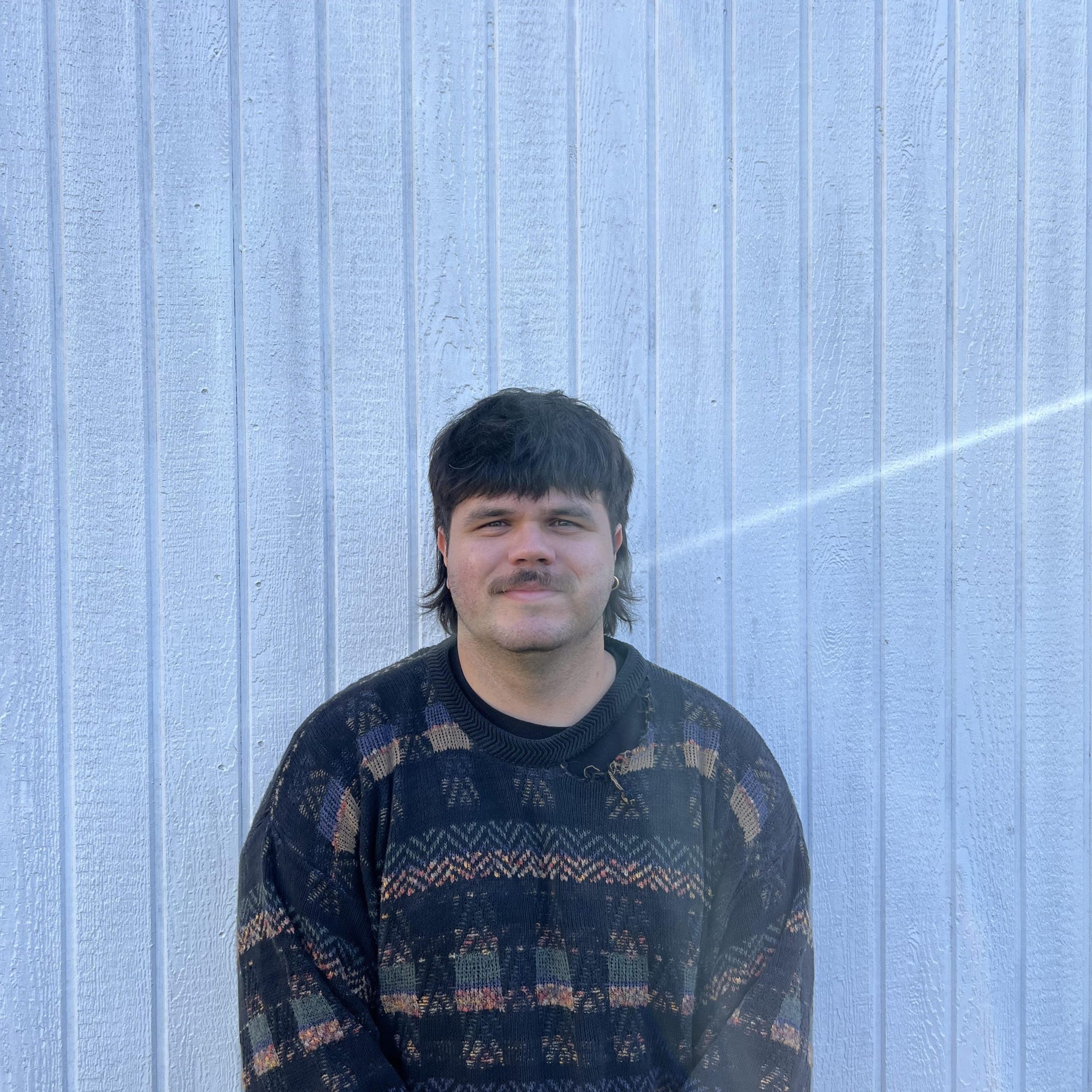
About the author: Moreit is a DJ and producer from Caracas, Venezuela who resides in the Midwest. Through the blending of sounds of Raptor House with those of all the varied strains of Techno, Moreit delivers distinctive grooves for the dancefloor.
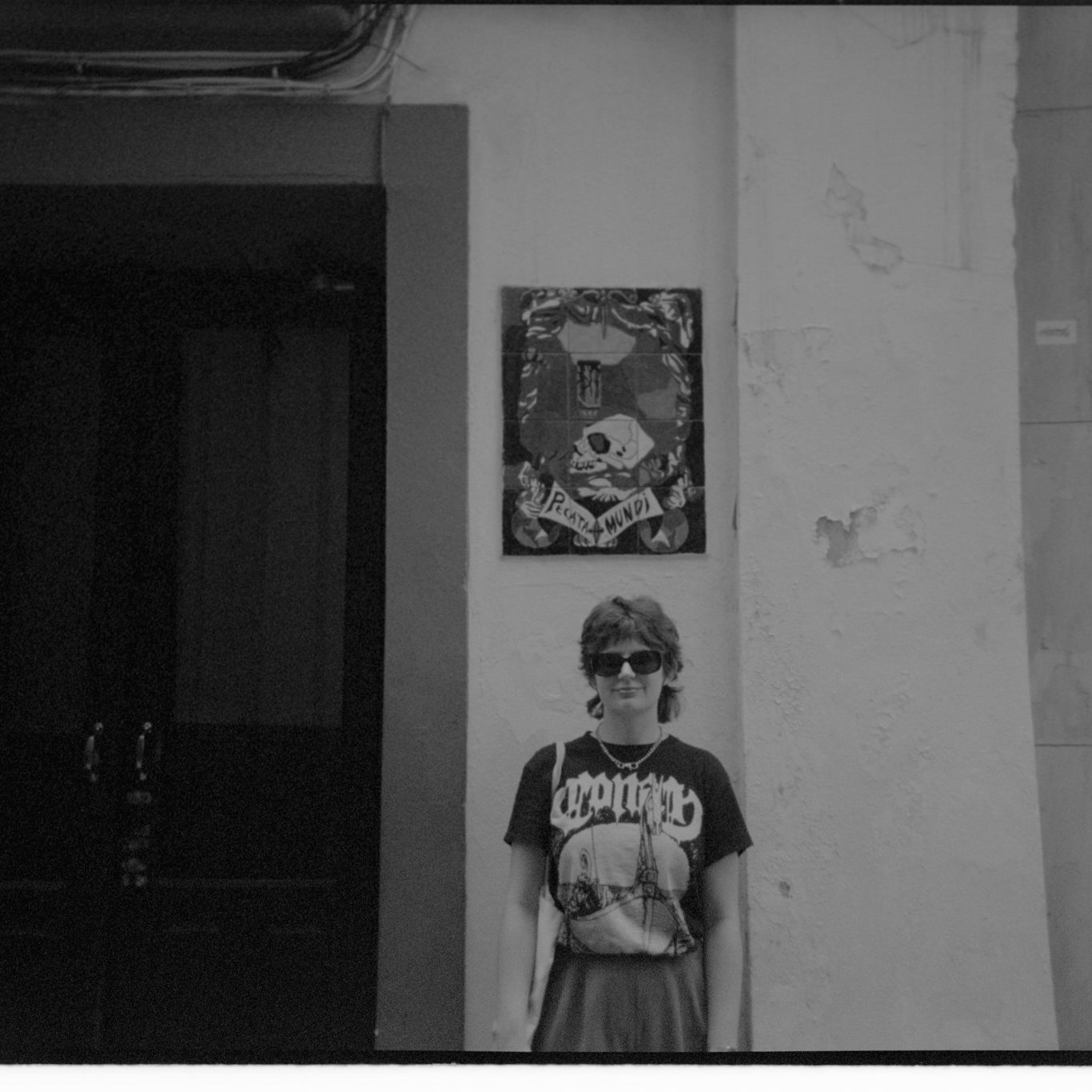
About the author: Livy Onalee Snyder’s writing has appeared in the Journal for Metal Music Studies, DARIA, Ruckus, TiltWest, Signal, and more. She graduated with her Masters from the University of Chicago in 2021. Currently, she holds a position at punctum books and serves on the board of the International Society for Metal Music Studies. Listen to her live on WHPK 88.5 FM Chicago. Read more of Livy’s writing for Sixty here.
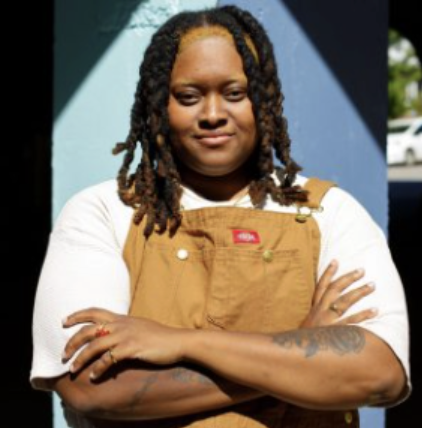
About the illustrator: Bri Robinson is a mixed media artist, analog collagist, sculpture artist, and historian who weaves intricate narratives of love, loss, and identity across the expansive Midwest. Through their unique process of cutting, pasting, and layering, Bri deepens the meaning of these found objects, transforming them into evocative works of art. Bri’s practice is deeply rooted in the exploration of identity, relationships, and the constant evolution of self. By merging archival materials with elements of popular culture, they create thought-provoking narratives that invite viewers to engage with the complexities of the queer experience. Through their work, Bri honors the past while also pushing the boundaries of contemporary art history, crafting pieces that are as introspective as they are expansive. Check out their work on Instagram @niq.uor.
